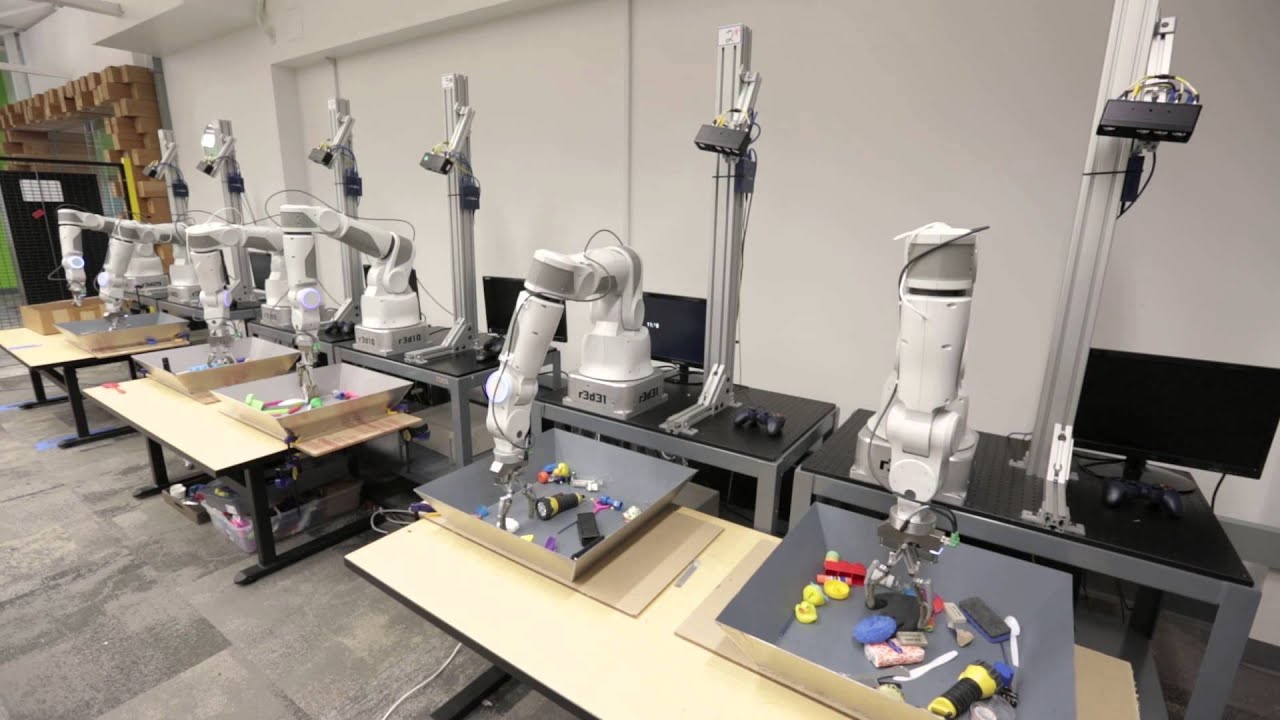Deep learning methods are often said to be very data-inefficient, requiring 100-1000 examples per class, where a human needs 1-2 to reach comparable classification accuracy.
However, modern datasets are huge (or can be made huge), which begs the question of whether we really need data-efficient algorithms. Are there application areas where a data-efficient machine learning algorithm would be very useful, despite making trade-offs elsewhere, e.g. training or inference efficiency? Would an ML algorithm that is, say, 100x more data-efficient, while being 1000x slower, be useful?
People who work on data-efficient algorithms often bring up robotics for "motivation". But even for robotics, large datasets can be collected, as is done in this data-collection factory at Google:
Basically, my concern is that while data-efficient algorithms exist (e.g. ILP, graphical models) and could be further improved, their practical applicability is squeezed between common tasks, where huge datasets exist, and rare ones, that may not be worth automating (leave something for humans!).

